Introduction
Polycystic Ovary Syndrome (PCOS) affects millions of women worldwide, influencing not just reproductive health but also metabolism, weight, and hormone balance. Among the many ways to manage PCOS naturally, food is one of the most powerful tools. By choosing the right ingredients and preparing meals tailored to hormonal needs, women with PCOS can experience better energy levels, improved insulin sensitivity, and fewer inflammatory symptoms. This guide introduces you to 20+ PCOS recipes that are as tasty as they are healing.
Whether you’re dealing with irregular cycles, weight fluctuations, or chronic fatigue, adopting a PCOS-friendly diet can make a major difference. From breakfasts that stabilize blood sugar to dinners rich in anti-inflammatory foods, we’ve gathered the best recipes to support your journey. And don’t worry—these dishes are easy to prepare, family-friendly, and full of flavor..PCOS Breakfast Recipes
In this blog, you’ll discover:
- Why nutrition plays a key role in PCOS management
- The top ingredients to add to your pantry
- Simple recipes for breakfast, lunch, dinner, snacks, and desserts
- Meal prep strategies to stay consistent
Let’s dive into the science-backed, taste-tested world of PCOS recipes that nourish your hormones and keep you satisfied!
Why Smart PCOS Recipes Matter
Understanding PCOS & Dietary Needs
PCOS is a complex hormonal disorder that primarily affects how a woman’s ovaries function. It can lead to symptoms like irregular periods, cysts on the ovaries, acne, and excessive hair growth. Many women with PCOS also struggle with insulin resistance, making it harder to manage weight and blood sugar.
Research shows that nutrition can have a major impact on PCOS symptoms. Choosing low-glycemic foods, reducing processed carbs, and increasing fiber and protein intake can help regulate blood sugar and hormones. A thoughtful approach to food also supports liver detoxification, which is essential for hormone regulation.
Nutrients That Support Hormone Balance
Certain nutrients are especially beneficial for women with PCOS:
- Magnesium: Found in leafy greens, nuts, and seeds, magnesium helps with insulin sensitivity.
- Omega-3 fatty acids: Present in fatty fish, flaxseed, and walnuts, these fight inflammation.
- Inositol: Naturally found in fruits and beans, inositol supports ovarian function and insulin metabolism.
- Vitamin D: Vital for hormonal balance; sources include egg yolks and fortified plant milk.
By planning meals with these nutrients in mind, you can naturally boost your body’s ability to balance hormones..Easy Cottage Cheese With Fruit Breakfast Bowls
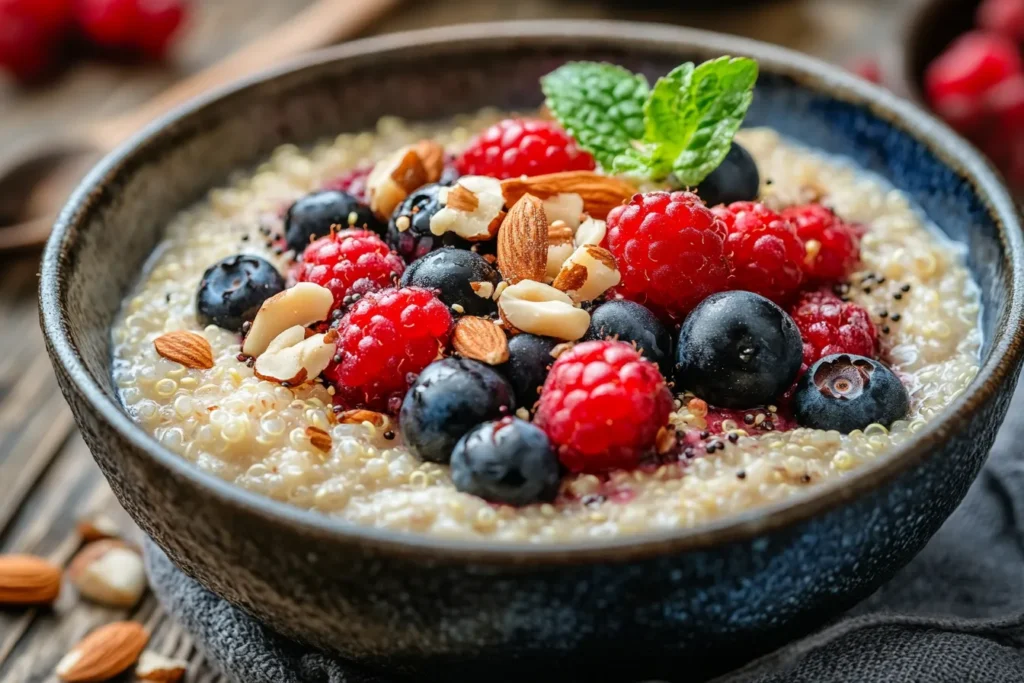
Key Principles for PCOS‑Friendly Cooking
Low‑Glycemic Index Foods
One of the most crucial aspects of cooking for PCOS is choosing low-glycemic index (GI) foods. These foods digest more slowly, helping to prevent blood sugar spikes that can exacerbate insulin resistance—a common issue for women with PCOS. Whole grains like quinoa, steel-cut oats, and brown rice are excellent choices. Instead of white bread or sugary cereals, opt for whole grain toast or rolled oats topped with fruit and nuts.
Using low-GI ingredients keeps blood sugar levels stable, which directly supports better hormonal regulation and reduces sugar cravings.
Anti‑Inflammatory Ingredients
PCOS is often linked with chronic inflammation, which contributes to symptoms like bloating, acne, and fatigue. That’s why it’s important to include anti-inflammatory foods in your meals. Ingredients like turmeric, ginger, leafy greens, berries, and fatty fish such as salmon are all anti-inflammatory powerhouses.
Cooking with olive oil, adding herbs like basil and parsley, and choosing plant-based options over processed foods can greatly reduce inflammation and support overall health.
Protein and Fiber Balance
Balancing protein and fiber in every meal helps manage hunger, supports digestion, and slows the release of sugar into the bloodstream. Lean proteins like chicken, tofu, eggs, and beans should be paired with high-fiber foods such as vegetables, legumes, and chia seeds.
A well-balanced PCOS-friendly plate typically includes:
- 1 serving of protein
- Plenty of vegetables (especially leafy or cruciferous)
- A small portion of healthy fats
- Moderate complex carbs
These components work together to promote fullness and reduce insulin resistance.
Breakfast PCOS Recipes
Starting your day with a balanced, nutrient-rich breakfast sets the tone for steady energy and hormone support. Avoid sugary cereals and refined carbs, and aim for meals rich in protein, fiber, and healthy fats.
Greek Yogurt Parfait with Berries & Seeds
Ingredients:
- 1 cup full-fat plain Greek yogurt
- ½ cup mixed berries (blueberries, raspberries)
- 1 tablespoon chia seeds
- 1 tablespoon crushed walnuts or almonds
- A drizzle of honey or stevia (optional)
Instructions:
Layer the yogurt, berries, seeds, and nuts in a jar or bowl. Enjoy chilled.
Benefits: Greek yogurt provides probiotics and protein, while berries add antioxidants. Chia seeds offer omega-3s and fiber, making this a complete, PCOS-friendly breakfast.
Quinoa Porridge with Nuts & Cinnamon
Ingredients:
- ½ cup cooked quinoa
- 1 cup unsweetened almond milk
- 1 tablespoon almond butter
- ½ teaspoon cinnamon
- 1 tablespoon ground flaxseed
Instructions:
Warm quinoa and almond milk in a pan, stir in almond butter and cinnamon, and top with flaxseed.
Benefits: Quinoa is a complete protein and low GI grain. Paired with healthy fats and warming spices, this porridge keeps you full and energized.
Savory Chickpea Flour Pancakes
Ingredients:
- ½ cup chickpea flour
- 1/3 cup water
- Chopped onions, spinach, cumin, turmeric
- Salt and pepper to taste
- Olive oil for pan
Instructions:
Mix all ingredients into a batter, pour into a hot skillet, and cook each side until golden brown.
Benefits: Chickpea flour is gluten-free, high in protein and fiber, and ideal for a blood-sugar-friendly breakfast.
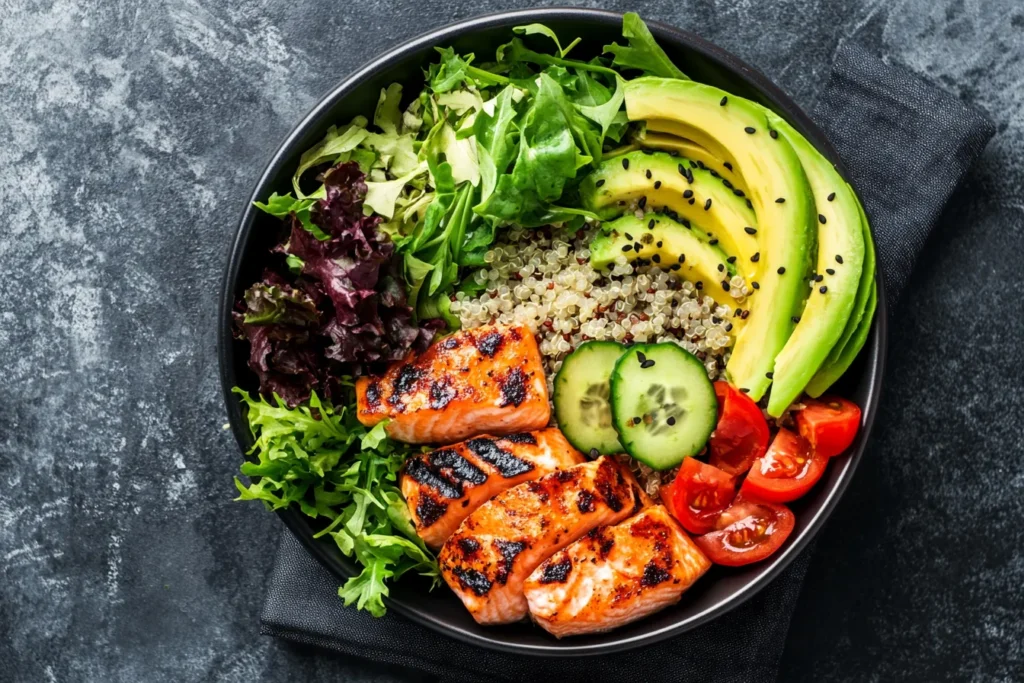
Lunch & Dinner PCOS Recipes
Lunch and dinner are perfect opportunities to load your plate with anti-inflammatory vegetables, lean proteins, and healthy fats. Meals at these times should be filling yet blood sugar-friendly, avoiding highly processed or carb-heavy dishes.
Grilled Salmon Buddha Bowl
Ingredients:
- 1 fillet of wild-caught salmon
- ½ cup cooked quinoa or brown rice
- 1 cup steamed broccoli
- ½ avocado, sliced
- A handful of spinach or kale
- Tahini dressing or lemon vinaigrette
Instructions:
Grill the salmon until fully cooked. Assemble your bowl with grains, greens, and vegetables, and top with salmon and dressing.
Benefits: Salmon is rich in omega-3s, which reduce inflammation and support hormone health. The avocado and greens provide fiber and essential fats.
Variations: Tofu, Chicken, Chickpeas
You can swap the salmon for:
- Grilled tofu for a vegan option
- Roasted chicken breast for more protein
- Spiced chickpeas for fiber and plant-based nutrients
These substitutes maintain the meal’s balance of protein, fiber, and healthy fats.
Zucchini Noodles with Pesto & Veggies
Ingredients:
- 2 zucchini, spiralized
- 1 cup cherry tomatoes
- ½ cup mushrooms
- 2 tablespoons pesto (homemade or store-bought)
- Olive oil for sautéing
Instructions:
Sauté zucchini noodles and veggies in olive oil for 5 minutes. Stir in pesto and serve warm.
Benefits: This low-carb dish is loaded with fiber and antioxidants, perfect for reducing inflammation and supporting digestion.
Lentil Stew with Root Vegetables
Ingredients:
- 1 cup dry green or brown lentils
- 1 chopped onion
- 2 carrots, sliced
- 1 sweet potato, cubed
- Garlic, turmeric, cumin
- Vegetable broth
Instructions:
Cook lentils with vegetables, spices, and broth for 30–40 minutes until tender. Season to taste.
Benefits: Lentils are rich in protein, iron, and fiber, making this a hearty and hormone-supportive meal, especially for plant-based eaters.
These meals are easy to prep in batches and store well in the fridge, making them perfect for busy days. You can also rotate ingredients to avoid boredom and keep your nutrient intake diverse.
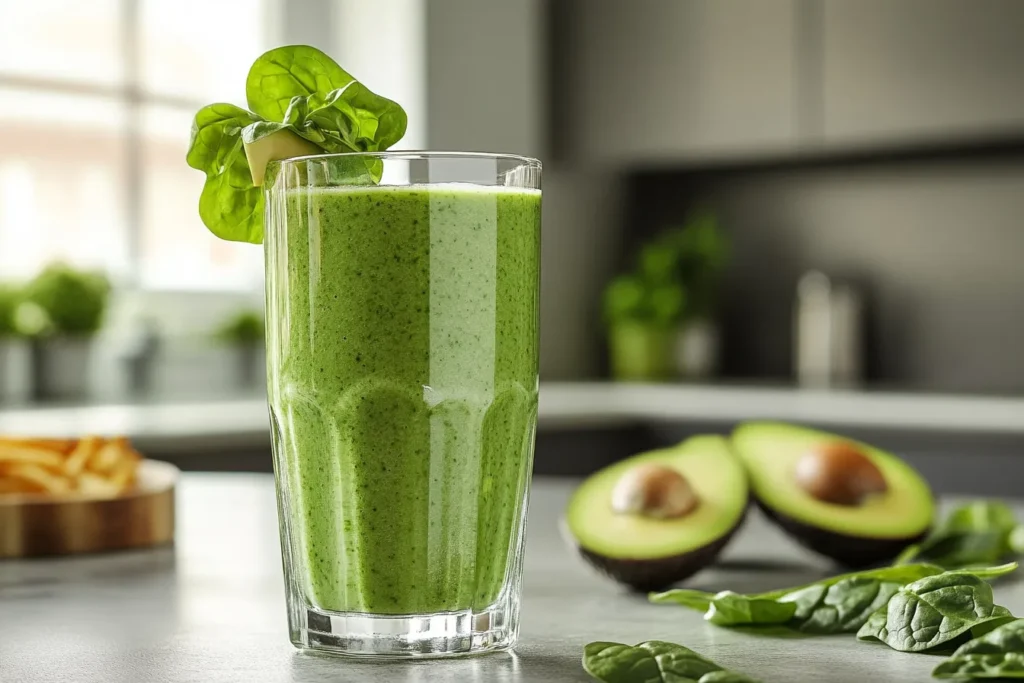
Snack & Smoothie Ideas
Snacking smart is crucial for women with PCOS. Poor snack choices—like refined carbs or sugary treats—can cause insulin spikes and worsen symptoms. Instead, opt for high-protein, high-fiber snacks that promote satiety and hormonal balance.
Green Smoothie with Spinach & Avocado
Ingredients:
- 1 cup unsweetened almond milk
- 1 handful fresh spinach
- ½ avocado
- ½ frozen banana
- 1 tablespoon chia seeds
- Dash of cinnamon
Instructions:
Blend all ingredients until smooth. Serve cold.
Benefits: Packed with fiber, healthy fats, and magnesium, this smoothie balances blood sugar and provides steady energy.
Roasted Chickpeas with Spices
Ingredients:
- 1 can chickpeas, rinsed and dried
- 1 tablespoon olive oil
- Paprika, cumin, garlic powder, sea salt
Instructions:
Toss chickpeas with oil and spices, roast at 400°F (200°C) for 30–40 minutes until crispy.
Benefits: This crunchy, savory snack offers plant protein, fiber, and essential minerals to fight inflammation and support metabolism.
Celery Sticks with Almond Butter
Ingredients:
- 2–3 celery sticks
- 2 tablespoons natural almond butter
Instructions:
Spread almond butter into celery grooves for a quick, crunchy snack.
Benefits: This classic snack is low-GI, full of healthy fats, and great for satiety.
PCOS-Friendly Desserts
Desserts don’t have to be off-limits when living with PCOS! You can enjoy naturally sweetened, nutrient-dense options that won’t spike your blood sugar.
Chia Seed Pudding with Cocoa & Almond Milk
Ingredients:
- 2 tablespoons chia seeds
- 1 cup unsweetened almond milk
- 1 teaspoon raw cocoa powder
- ½ teaspoon vanilla extract
- Stevia or monk fruit to taste
Instructions:
Mix all ingredients in a jar. Chill for 4–6 hours or overnight.
Benefits: This pudding is high in fiber and omega-3s, helping to reduce inflammation and support digestive health.
Baked Apple with Cinnamon & Walnuts
Ingredients:
- 1 apple, cored
- 1 tablespoon crushed walnuts
- ½ teaspoon cinnamon
- Drizzle of honey (optional)
Instructions:
Fill apple center with walnuts and cinnamon. Bake at 350°F (175°C) for 25–30 minutes.
Benefits: Apples provide fiber and antioxidants, while cinnamon helps stabilize blood sugar—making this a comforting, guilt-free dessert.
These PCOS-friendly treats ensure that your eating plan is enjoyable and sustainable, without sacrificing flavor or health benefits.
Meal‑Prep Tips & Weekly Plan
Maintaining a healthy PCOS diet is much easier when you’re prepared ahead of time. Meal prepping not only saves time but also prevents impulse eating and ensures that your meals remain balanced and nourishing.
Batch‑Cooking Proteins & Grains
Choose a day of the week—like Sunday or Monday—to prep key ingredients:
- Grains: Cook large portions of quinoa, brown rice, or millet and store in the fridge for up to 5 days.
- Proteins: Bake or grill several servings of chicken breast, tofu, hard-boiled eggs, or lentils.
- Vegetables: Roast trays of broccoli, cauliflower, zucchini, and carrots seasoned with herbs and olive oil.
Divide these into containers to mix and match for lunches and dinners throughout the week.
Smart Storage & Portion Control
Use clear, stackable containers to make meals easy to find. Consider labeling each with the day of the week or meal type. Try the “half-plate rule”:
- Half the plate: Non-starchy veggies
- One-quarter: Protein
- One-quarter: Whole grains or complex carbs
Portion control ensures you’re getting the right mix of macronutrients to support hormone regulation and insulin balance.
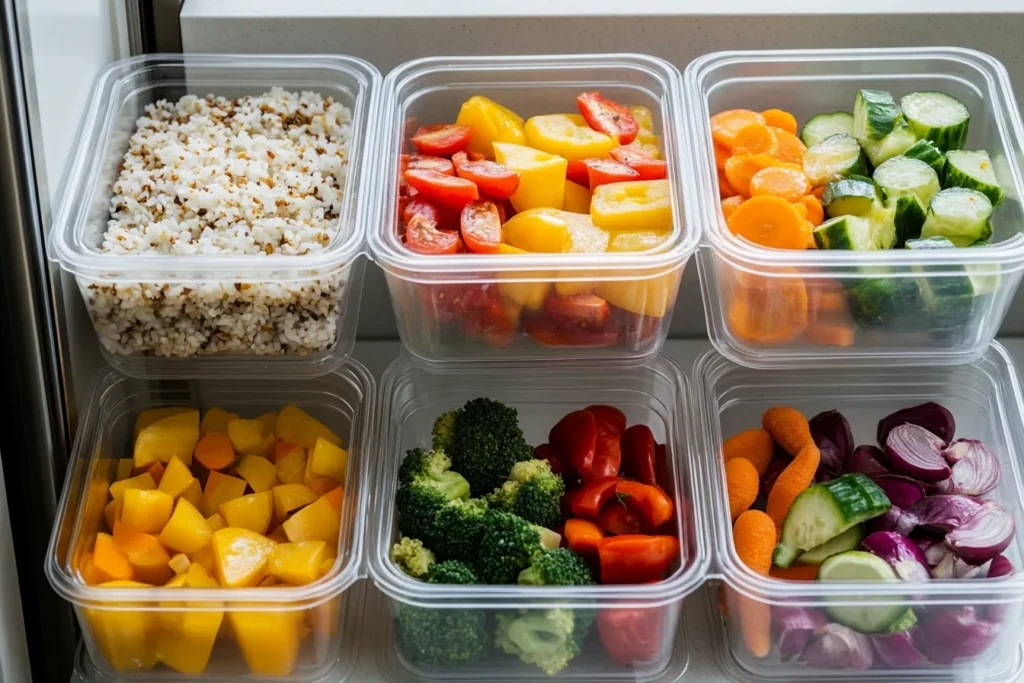
How to Customize Recipes for PCOS
Everyone’s body is different, and PCOS symptoms vary. Your diet should reflect your unique metabolic needs, sensitivities, and health goals.
Swap Ingredients Based on Sensitivities
Some women with PCOS may be sensitive to dairy, gluten, or soy. Here are easy swaps:
- Dairy-free: Use almond milk, coconut yogurt, or cashew cheese
- Gluten-free: Opt for brown rice, buckwheat, or quinoa pasta
- Soy-free: Replace tofu with lentils or hemp seeds
These changes reduce inflammation and help you find what works best for your body.
Adjust Macros for Weight or Insulin Goals
Depending on your goal—whether it’s managing insulin resistance or supporting weight loss—you can adjust your macronutrient intake:
- For weight loss, prioritize lean proteins, low-GI carbs, and moderate healthy fats
- For insulin balance, reduce carb intake slightly and focus on fiber-rich veggies and healthy fats
Using tools like MyFitnessPal or a dietitian’s guidance can help tailor meals to your hormonal and metabolic profile.
With a well-thought-out prep plan and adaptable recipes, maintaining a hormone-supportive diet becomes second nature.
FAQs
Can PCOS recipes help with weight loss?
Yes! By focusing on low-glycemic carbs, protein, and fiber, PCOS recipes help stabilize blood sugar and reduce insulin spikes, which promotes healthy weight management. Consistent meal choices reduce cravings and support metabolic balance.
Are there specific foods to avoid with PCOS?
Common foods to limit include:
- Refined sugars and processed carbs (white bread, pastries)
- Sugary drinks and fruit juices
- Highly processed snacks
- Dairy (for some individuals)
Reducing inflammatory foods like refined seed oils and trans fats can also improve symptoms.
How often should I meal-prep?
Ideally once a week. Preparing proteins, grains, and veggies in advance sets you up for success. If needed, refresh perishable items mid-week (like fresh salads or smoothie packs).
Can I enjoy desserts on a PCOS plan?
Absolutely! Enjoy naturally sweet desserts—like chia pudding or baked fruit—with minimal added sweeteners. These treat options support both wellness and enjoyment.
Are smoothies a good snack for PCOS?
Yes, when they include healthy fats, protein, and fiber. Blending ingredients like avocado, nuts, seeds, and plant milk ensures stable blood sugar and longer fullness.
How soon can I see results with a PCOS diet?
While everyone’s response varies, many women notice improvements in energy, mood, and digestion within 2–4 weeks. Hormonal changes may take 2–3 months as your body adapts.
Conclusion & Final Thoughts
A diet designed with PCOS in mind isn’t just about weight loss—it’s about hormone support, inflammation reduction, and metabolic balance. The 20+ recipes shared here are built on solid principles: low glycemic load, anti-inflammatory ingredients, protein–fiber balance, and smart customization. By cooking with intention and planning ahead, you can create a sustainable lifestyle—not a quick fix.
Remember: consistency, personalization, and quality ingredients are your allies. Pair your meals with regular movement, stress reduction, and adequate sleep for best results. With these tools, you’re on your way to feeling stronger, more energetic, and truly supported in your PCOS journey.
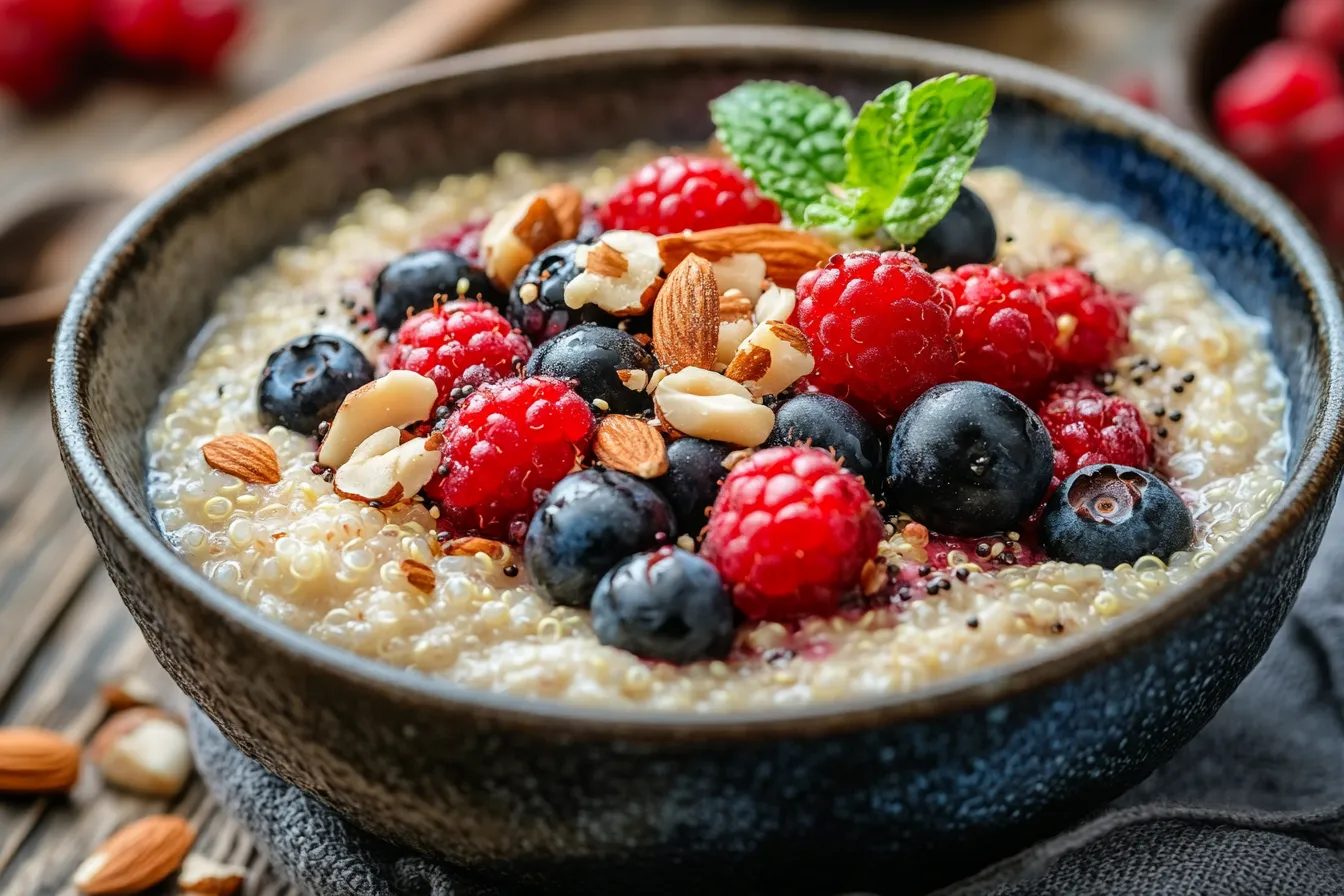
Name: Grilled Salmon Buddha Bowl
Ingredients
Equipment
Method
- Instructions:
- Season salmon with salt, pepper, and a drizzle of olive oil. Grill it on medium heat for 3–4 minutes per side or until fully cooked.
- Cook quinoa according to package instructions (usually 1:2 quinoa to water ratio).
- Steam broccoli until just tender but still vibrant green (about 5–7 minutes).
- Arrange spinach, quinoa, and broccoli in a bowl. Top with grilled salmon and avocado slices.
- Drizzle tahini or lemon vinaigrette over the top. Add optional garnishes.
- Serve warm or room temperature.

